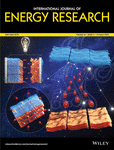Selection of waste thermoplastics for shape stabilized phase change materials using multicriteria techniques
Funding information: Eskişehir Technical University Scientific Research Project Commission, Grant/Award Number: 20ADP199
Summary
A variety of polymer matrices, based on thermoplastic resins are used to produce shape stabilized phase change material (SSPCM) with a large range of chemical and mechanical properties. In order to reduce global environmental problems and conserve natural resources, instead of raw polymers, waste thermoplastics can be utilized as encapsulation material to produce SSPCM. Low-density polyethylene (LDPE), high-density polyethylene (HDPE), polystyrene (PS), and polypropylene (PP) are the most preferred polymers for use as encapsulation materials. However, utilization of waste forms of these thermoplastics is important as SSPCM depends on various parameters that cannot be easily compared manually. In this study, based on this idea, the Technique for Order of Preference by Similarity to Ideal Solution (TOPSIS) and VlseKriterijumska Optimizacija I Kompromisno Resenje (VIKOR), two different multi-criteria decision methods, are used to select the most appropriate waste polymers to be used as encapsulation material to produce SSPCM in terms of thermal, mechanical and waste properties. These properties are detailed in seven criteria; melting temperature, degradation temperature, thermal conductivity, specific heat, elasticity modulus, waste cost, and supply of waste. The weighting of these criteria is carried out by decision-makers and the analytic hierarchy process (AHP). According to the TOPSIS and VIKOR results, LDPE was chosen as the best alternative (Ci+: 0.5860 and Qi: 0.0000 with the decision-makers' approach and Ci+: 0.6336 and Qi: 0.0000 with AHP method, respectively) for the average values of the decision matrix. Sensitivity analysis, performed with the lowest and highest values of the decision matrix, verified the ranking of LDPE as the most appropriate waste thermoplastic for SSPCM applications.




